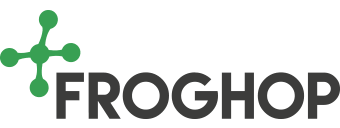From December 2016, comprehensive nutrition labelling will be mandatory for all pre-packed foods in the UK. If you’re new to food producing you can begin good practices now, while those with products already on the market may need to make some simple adjustments.
The two main considerations are regulation requirements and consumer clarity.
Making everything clear for consumers
While all guidance states that labels should be easy to understand and not make misleading claims, it’s evident this is not always the case. Misleading claims can affect consumer confidence, your brand’s integrity and may have legal implications too. In the UK there is tight regulation which is mainly focused on nutrition rather than the use of terms such as ‘green’, ‘natural’ or ‘healthy’.
The exception tends to be when if you make a specific health claim, such as ‘lowers cholesterol’. The British Nutrition Foundation states that before a company can make such a claim it should be reviewed by a panel of experts. The European Food Safety Authority assesses whether the claim is supported by scientific evidence. At present, the European Commission then decides whether to authorise the claim and how it should be worded.
I think it just makes sense to make your labelling – and any claims – clear and evidenced. Trust is crucial, for food producers both new and established. I’d also recommend using terms that are easy to understand as more and more consumers are checking the nutritional content of the food they buy.
The new regulations
Front of pack labelling
In terms of nutrition, front of pack labelling is voluntary. However, if you do include it, we must follow a set format: energy value alone or energy plus amounts of fat, saturates, sugars and salt. This should follow a traffic light colour coding combining guideline daily amounts (GDA), traffic light colour coding with high (red), medium (amber) or low (green) text. You’re probably familiar with this format as it’s now commonplace on many supermarket own-brand products.
Back of pack labelling
This will soon be mandatory for nutrition information on all pre-packed foods. This must be outlined in the same format:
- Energy values in kilojoules (Kj) and kilocalories (kcal)
- Amounts in grams (g) of fat, saturates, carbohydrate, sugars, protein and salt
Other than nutrition, the minimum information required is as follows:
- A true name or description of the food
- The ingredients it contains, in descending weight order
- How it should be handled, stored, cooked or prepared
- Who manufactured, packed or imported it
- Origin information if its absence would mislead
- Allergenic ingredients identified on the label
- Specific information declaring whether the food is irradiated or contains genetically modified material or aspartame, high caffeine, sweeteners, packaging gases and so on
- Net quantity in grams, kilograms, litres and so on
- Alcoholic strength where there is more than 1.2% alcohol by volume
- Best before or use by dates
Even if you already provide this information you may need to amend your labelling as the legislation requires this information to be provided in a prescribed order, and the salt content is now required rather than sodium.
